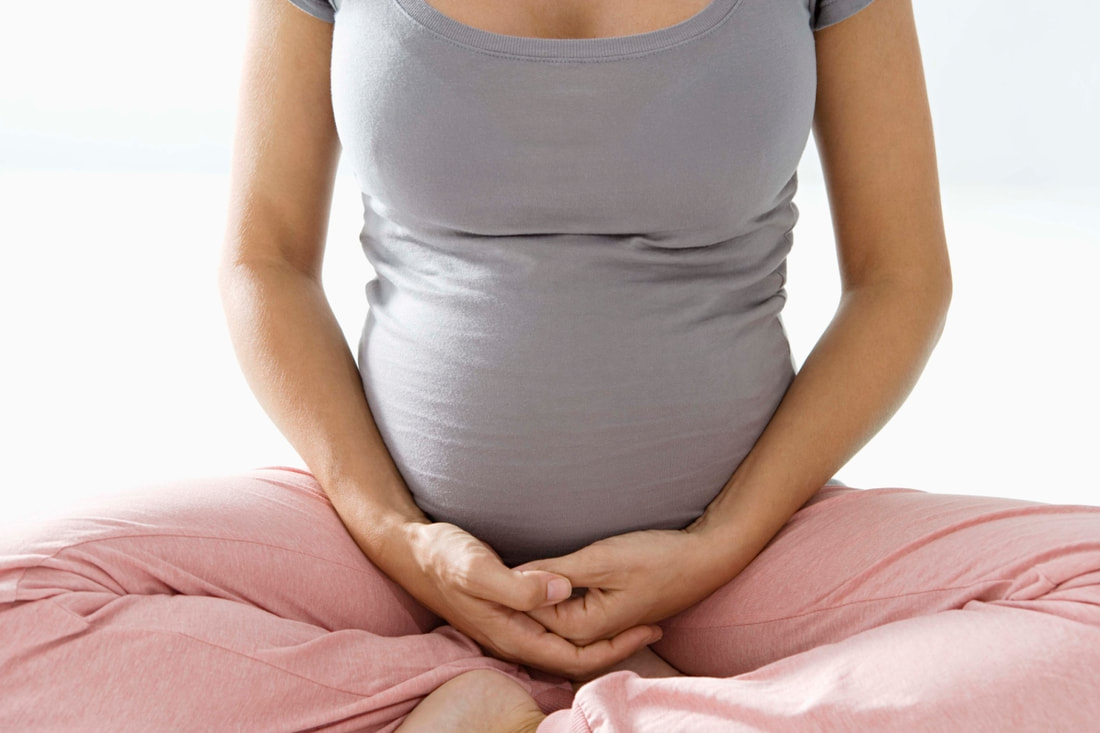|
Pelvic Girdle pain is literally a pain in the bum, not to mention the groin. If you've ever had it, you know exactly what we're talking about! It's really an umbrella term for pain that occurs within the joints of the pelvis.
What does it feel like? Symptoms and severity vary between women, however the most common ones are: Pain deep down in the groin (on the bony part of your public bone) Pain near the dimples of your lower back Pain that radiates from the lower back and into the bottom Pain when walking, stair climbing, rolling over in bed, getting out of the car, stepping to the side, vacuuming, putting on your underwear whilst standing, and any other movement when one side is favoured. When does it happen? Pelvic Girdle Pain can present at any time, however it is most commonly seen from about 14 weeks into your pregnancy. The pain often decreases after childbirth. Why does it happen? There's a clever hormone called Relaxin which helps prepare the body for birth by making the ligaments a little more stretchy. This hormone peaks at about 14 weeks gestation. Due to increased laxity in the ligaments in the pelvis, a little bit more shearing happens between the pelvic bones and spine which can create instability, inflammation and pain. What can I do about it? Pelvic Girdle Pain can be very debilitating and when it comes to treating it, it's not one size fits all.
At Mummas On The Move we can liaise with your Physiotherapist and develop a personalised exercise plan to work around your Pelvic Girdle Pain. We know it's a pain (literally) and we are here to help!
0 Comments
You've probably heard of the term Abdominal Separation before but what does it really mean and what can we do about it?
It's not as scary as it sounds... It's actually not a split of the abdominal muscles but rather a stretching and thinning of the connective tissue called your Linea Alba. Between eighteen to thirty weeks pregnant, there is a significant stretching of the connective tissue between the abdominals... Your body is amazing and the stretching of connective tissue allows your body to constantly adapt as the baby grows throughout pregnancy. Stretching of this tissue happens above, below and inline with the belly button at varying degrees. What does it look like? During pregnancy it looks like a doming or a ridge in the middle of the stomach, and can often be seen when using or flexing your trunk i.e. getting out of bed or bending down to pick something off the floor. As a new mum it can feel like a noticeable gap down the midline of your stomach at rest or a doming of your abdominals when flexing your trunk. Factors that contribute towards Abdominal Separation include:
Here are our top Do's and Don'ts when it comes to Abdominal Separation... We do recommend:
We don't recommend:
Whether you are pregnant or you are a new mum, we can help you enjoy a safe return to exercise with our Personal Training, Group Sessions and Online classes. If you are looking for a Women's Health Physio to assess your Abdominal Separation or other women's health concerns, Janette O'Toole from Better Health Physiotherapy can help! Sarah Mummas On The Move Introducing The Rehab Series to our Move Online portalHey mummas! Does anyone else have a sore neck? It may have started as a niggle here and there but now that your eight weeks deep into mum life, it's an overwhelming achey feeling that you can't shake. Well don't worry, I've got you. You see, most online exercise videos that are out there at the moment don't address the underlying problems that most mums tackle. Sure they might get you moving or help you shift some post baby weight, but what about actually addressing the physical aches and pains that you face on a day to day basis? And that's where I step in! I've designed a series of videos called The Rehab Series on our Move Online Portal which break down how to overcome common physical issues that new mums experience. Over the next few weeks, these videos will be released on our Online Portal. If you enjoyed this video and you want more, you can register for a one week free trial, just click the button below to create a free account and register for your free trial. We also have some awesome workouts specifically designed to strengthen and tone your body as a new and expecting mum. The only pain in the neck you'll have now is trying to source nappies and toilet paper during the current lockdown! Looking forward to moving with you soon! Sarah |
AuthorSarah is the founder of Mummas On The Move, her goal is to empower women to move with confidence and enjoy a safe return to exercise. She is a certified Pre & Post Natal Exercise Trainer, Exercise and Sport Scientist and Pilates trainer. ArchivesCategories |


 RSS Feed
RSS Feed